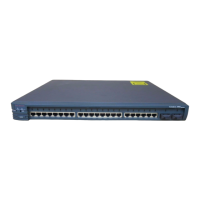Chapter 3: Supervisor Engine Configuration 41
Section 3-5
Table 3-3 File Management Alias Commands
Cisco IOS
Software
Release 10.2
and Earlier
Command
Cisco IOS Software
Release 10.3 to 11.3
Command
Cisco IOS Software Release 12.0 and
Later (IFS) Command
write terminal
show running-config show system:running-config or more
system:running-config
show config
show startup-config show system:startup-config or more
system:startup-config
write memory
copy running-config
startup-config
copy system:running-config nvram:start-
up-config
write erase
erase startup-config erase nvram:
write network
copy running-config
tftp:
copy system:running-config
tftp://address/filename
config memory
copy startup-config
running-config
copy nvram:startup-config system:run-
ning-config
config network
copy tftp running-
config
copy tftp://address/filename
system:running-config
config
overwrite
copy tftp startup-
config
copy tftp://address/filename
nvram:startup-config
first copy the active configuration into the Flash file system, and then in global con-
figuration, use the boot config parameter followed by the file system name and file
location and name. After you save this configuration, the router attempts to load the
configuration from the specified location.
Alias Commands
Because the new file system functionality is the third generation of file management sys-
tems for Cisco IOS, alias commands have been established to provide backward compati-
bility for commands that existed in previous operating systems. This backward compati-
bility enables you to use file management commands that you might have learned in pre-
vious releases without having to relearn the new command structure. Table 3-3 shows the
alias commands and the IFS equivalent command.
